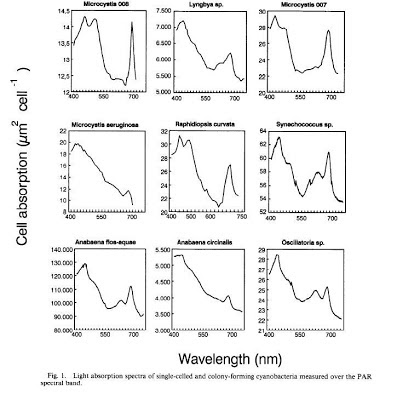CYANOBACTERIA (RED SLIME ALGAE) AND METHODS TO COMBAT IT
by Orphek
Cyanobacteria are the bane of all marine aquarists and at
sometime, most every aquarist will experience this dreaded bacteria. Cyano can appear in different colors
depending on the specie that may develop.
The term Red Slime Algae isn’t necessarily true; it can be blue,
blue/green, purple, etc. depending on the specie. Cyano, if present in large colonies can affect
both the fishes and coral’s health.
Cyano generally appears when aquarists slack off in maintenance because
“everything looks good”.
There are many factors that contribute to Cyanobacteria;
light, excess nutrients, and poor water flow.
When these conditions are present, Cyano can develop and when it starts,
it can spread rather fast.
Light: Poor lighting
in terms of intensity and correct spectrum is one contributor to cyano growth. It has been proven that intense light of the
proper spectrum hinders Cyano growth since it prefers lower light intensity and
a poor spectrum. The chart below shows
Cyano adsorption rates of different species and how they react to a particular
spectrum. Orphek LED lighting products
are all designed to inhibit Cyano growth by providing high intensity output and
using the spectrum that is most beneficial to corals or other photosynthetic
invertebrates.
Nutrients: Excess
nutrients are another contributor of Cyano growth. It can be in the form of excess food, fish
waste, and dissolved nutrients. An overrated
quality protein skimmer is recommended to reduce excess nutrients. Quality activated carbon is also very useful
as it will remove contaminants that a protein skimmer will not remove from the
water.
Water Flow: Poor
water flow creates stagnant areas in the tank where Cyano spores are allowed to
settle and start growth. Total water
flow, including power heads, should be at least 10 times the volume of your
tank. Wavemakers or smart pumps are
highly recommended. The goal is not to
let suspended food or waste settle but to keep it in suspension so it can enter
the sump and be filtered out by chemical or mechanical means.
Combating Cyano: The
three contributors listed above must be addressed and corrected as a first step
in eliminating Cyano. There are also
products available said to kill Cyano and one such product is Ultra Life’s Red
Slime Remover but there are similar products that will have the same effect.
A word of caution when using any of these products;
Erythromycin or a similar antibacterial medication is used in these
products. Since Cyano is bacterium and not
algae, the medication attacks the bacteria.
The downside is that the medication is not selective; it will kill both
good and bad bacteria. Your corals may
lose color and stop growing until the treatment period is over so caution and a
careful eye is advised.
Before you begin
dosing, it is a good idea to do a water change and suck out as much Cyano as
you can.
It is highly recommended that
you follow the instructions to a tee and not eliminate any step. Be as accurate as possible in determining the
dosing level you require. Under dosing
has little to no effect and overdosing can be disastrous to invertebrates. For
best results it is imperative that the three contributors listed above be
corrected before dosing any medication.
If this is not corrected first, the Cyano will return shortly after the
medication period is over. It makes no
sense to dose first, then correct the problem later. Doing so will require you to do another
dosing period which puts further stress on your livestock.
Orphek does not endorse or guarantee that any of the Cyano
removing products will be effective and safe for your system.

No comments:
Post a Comment